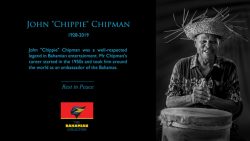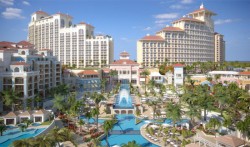San Salvador, BAHAMAS — Scuba divers and sport fishermen seeking an out-island experience have long favored the clear, warm waters around San Salvador, a sparsely populated island located nearly 400 miles east-southeast of Fort Lauderdale.
Only about 1,000 people inhabit this 12- by seven-mile land mass widely believed to be the spot where Christopher Columbus arrived in October, 1492. There are no traffic lights and almost no crime. Most of the pristine beaches are deserted, and the kerosene-powered lighthouse still is hand-cranked. World-record-sized wahoo are frequently caught in the deep, cobalt waters less than a mile off the island’s west side. Parties of scuba divers don’t have to race each other to prized dive sites.
But like many an island oasis, San Salvador has to work to avoid becoming paradise lost. Divers spot fewer Nassau groupers and conch than in the past. Dive operators at the Riding Rock Inn report a single sighting of a Goliath grouper in the past five years. Diver Derry Huff of North Miami saw a hammerhead shark bearing a laceration on its dorsal fin that he said looked very much like someone had tried to cut it off with a knife — a sign of an illegal practice known as shark finning.
Recently two primitive longline buoys resembling hi-flyers washed up on deserted High Key where the only inhabitant — an osprey — has built a spectacular penthouse nest of natural and man-made materials. Beach walkers have found sections of line and portions of fish traps scattered among the shells and seaweed. There are rumors of the illegal spearing of lobster and fish by divers using surface-supported hookah rigs; spearfishing while free diving is permitted.
PROTECTED AREA
All of this has led to discussions and tentative plans for a marine protected area, or no-take zone, to conserve resources.
“We’re trying to preserve what we have before it gets ruined,” said Susan Morales, who runs the dive operation at Riding Rock with husband Jean-Paul.
Morales and other local residents — including researchers at the Gerace Field Station — have been circulating petitions and holding meetings to try to drum up support for a reserve. Morales says no boundaries have been drawn — “the community will dictate where it will be” — but representatives of the Bahamas National Trust are expected to hold discussions with island residents.
Meanwhile, dive operators are considering a voluntary program of selling $10 tags — similar to a long-standing program in Bonaire — to pay for moorings and law-enforcement patrols. Currently, San Salvador has no fisheries enforcement agent, although Morales said she has received assurances from the fisheries ministry that the island is “next on the list.”
OTHER PERIL
Morales said overfishing and shark finning are not the only problems for San Salvador’s sensitive environment; land-based resources also are in peril.
On an island where the average annual rainfall is 39 inches, a prospective developer has proposed building a world-class golf course. Not only would the golf course require more water in a week than the Gerace Field Station consumes in a year, but Morales notes its impacts would spill over into San Salvador’s spectacular reefs and wall, where the depth drops steeply from 20 to 2,000 feet.
“That would ruin the island,” she said. “Sediment with fertilizer spawns algae and too much would kill the reef.”
Currently, the reefs are healthy and vibrant, especially along portions of the wall where currents are strongest. Colorful coral and sponges decorate nearly every ledge and lead to numerous swim-through caverns and steep chimneys that beckon divers.
Nassau groupers, enjoying a short seasonal closure for spawning, approach divers without fear, happily posing for cameras. Hammerheads check out divers along the wall, coming close enough to be photographed but not to threaten. Stingrays and sea turtles make frequent appearances.
Morales said she does not believe implementing a marine reserve will be an uphill battle.
“The people here know it’s a special place with nature, and that’s what they want to preserve,” she said.
The Miami Herald



